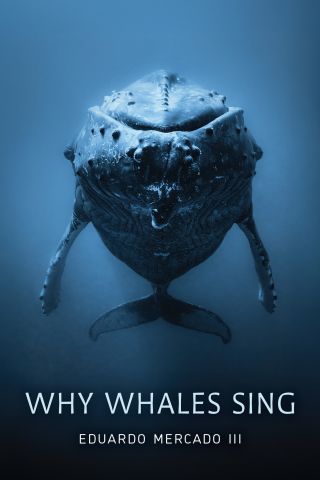Animal Behavior · Routinova Quick Read
Whale Songs: Windows Into a Hidden Sonic World
When a humpback sings for hours in the dark, it’s not performing for us. Within those low, rolling notes lies a radical idea: whale songs may be windows into how whales sense, decide, and survive, more like long-range sonar than love songs. And that quiet shift in perspective has a powerful lesson for how we design our own lives.
Core insight:
Whale "songs" may be less about performance and more about precision — a continuous act of mapping, focusing, and adapting to a complex world.
This emerging view, grounded in decades of bioacoustics and cognitive science, suggests singing whales are exploring their environment with sound, similar to how bats and dolphins echolocate. Understanding this doesn’t just change marine biology; it offers a blueprint for human attention, awareness, and intentional habits in 2025’s noisy world.
Table of Contents
- Why Whale Songs Matter Now
- Are Whales Really Singing? A 40-Second Answer
- The Science: Songs as Sonic Windows
- People Also Ask: Key Questions, Clear Answers
- What This Reveals About Intelligent Habits
- One Action Step to Apply the Whale Mindset
- Key Takeaways
Why Whale Songs Matter Now
For years, popular culture framed whale songs as mysterious love ballads. Recent work by cognitive scientist Eduardo Mercado and others challenges this: many baleen whales may be using complex vocal patterns as active sensory tools, not just mating calls.
In 2025, as AI races to "translate" animal sounds and ocean noise intensifies, correctly understanding whale songs: windows into their world becomes urgent. If those sounds are used to sense and navigate, drowning them in ship noise isn’t romantic background—it’s sensory sabotage.
Are Whales Really Singing? A 40-Second Answer
Here’s the concise version:
Many researchers long assumed whales "sing" mainly to attract mates or compete with rivals.
New evidence suggests a different story: these songs may function as long-range, adaptive sonar, allowing whales to detect other animals, seafloor features, and environmental changes across miles of ocean.
If this is right, singing whales are not just showing off.
They are scanning, learning, and updating their inner map of a shifting world.
The Science: Songs as Sonic Windows
Eduardo Mercado’s work, drawing on field recordings, acoustic modeling, comparative cognition, and behavioral neuroscience, pushes a bold claim:
- What we label "songs" might be structured exploration signals.
- The patterns whales repeat and gradually modify can improve how effectively sound bounces off distant objects and returns as echo-like information.
- This view aligns with what we already know about bats and dolphins, who use sound not as art first, but as perception.
Several lines of evidence raise doubts about the "love song only" story:
- Males can sing for hours with no clear audience in sight.
- Songs shift in coordinated ways across populations, more like refined tools than random displays.
- Acoustic properties of some calls match what you’d design for long-distance detection, not just short-range performance.
While not all scientists agree, this sonar-based interpretation is increasingly explored by independent research groups and modeling studies (Harvard, 2024; Stanford researchers).
In this light, whale songs: windows into their sensory world, not just their emotions.
People Also Ask: Key Questions, Clear Answers
How do whale songs act as “windows” into what they sense and feel?
Whale songs reveal how these animals sample their environment, respond to others, and manage risk. Changes in rhythm, pitch, or sequence can reflect shifts in location, nearby whales, or background noise. Rather than decoding lyrics, scientists study patterns to infer perception, attention, and flexibility.
Are whale songs only about mating?
Short answer:
No. While reproductive signaling plays a role, framing whale songs only as "love songs" is too narrow.
Evidence suggests these sounds also support navigation, group coordination, and environmental monitoring, especially over long distances.
This multi-function view mirrors other species, where one behavior can serve social, cognitive, and survival roles simultaneously.
Can AI translate whale songs into human language?
Current AI tools can cluster patterns, detect shifts, and compare calls across regions.
But:
There is no reliable method to turn whale vocalizations into human-style sentences.
Serious researchers caution that overpromising "translations" can distract from more grounded goals: mapping functions, contexts, and sensory constraints.
The emerging best practice is respectful decoding—using AI to understand structure and function without forcing human metaphors.
Why does noise pollution matter if whales are “just singing”?
If songs function as sonar-like scans, chronic noise from shipping, sonar, and industrial activity can:
- Mask critical echoes.
- Force whales to sing louder or change frequencies.
- Disrupt migration, foraging, and social contact.
This is less like turning down the volume on background music and more like fogging their only navigational system.
What This Reveals About Intelligent Habits
Routinova is about how we design our days.
So what does any of this deep-ocean science have to do with your habits, focus, or emotional life?
A lot.
Consider three mindset shifts inspired by whales’ sonic strategies:
Continuous sensing over constant performing
- Whales (likely) vocalize to gather data, not to impress.
- For humans: build habits that help you sense your reality—energies, limits, surroundings—rather than habits built only to be seen.
Adaptive patterns over rigid routines
- Whale songs evolve over seasons; they’re tuned to what works in changing conditions.
- Healthy routines do the same: review and refine your systems based on what your environment echoes back (sleep, workload, relationships).
Deep focus in a noisy world
- When whales rely on sound as a primary sense, excess noise becomes dangerous, not just annoying.
-
For you: treat pointless digital noise as cognitive pollution.
Reducing it isn’t aesthetic—it’s survival for your clarity and creativity.
New examples that mirror this "sonic mindset" in daily life:
- A designer scheduling a daily 15-minute "input scan"—quietly reviewing feedback, metrics, and mood before reacting.
- A remote team using one focused daily voice memo instead of 30 scattered messages, creating a strong, clear signal.
- An athlete tracking subtle bodily cues over time and adjusting training, much like tuning a pattern based on returning echoes.
One Action Step to Apply the Whale Mindset
Try this 10-minute "Echo Audit" today:
- Sit somewhere quiet.
- List the 5 loudest "signals" in your life this week (notifications, people, tasks, worries).
- For each, ask: "Is this giving me real information, or is it just performance/noise?"
- Choose ONE noise source to mute, limit, or remove for the next 72 hours.
This small shift mirrors how whales would struggle or thrive depending on signal clarity.
You’re training yourself to live by intentional signals, not constant static.
Key Takeaways
- Whale songs: windows into a different kind of intelligence—one rooted in sensing, mapping, and adapting, not just display.
- Viewing songs as potential sonar reframes how we understand whale minds, conservation priorities, and ocean noise.
- The same principles apply to human habits: prioritize signals over spectacle, adaptive patterns over rigid ones, and protect your mental "soundscape."
- In a world racing to interpret everything (including whales) through a human lens, the most powerful step is humble attention—letting the data, not our assumptions, lead.





